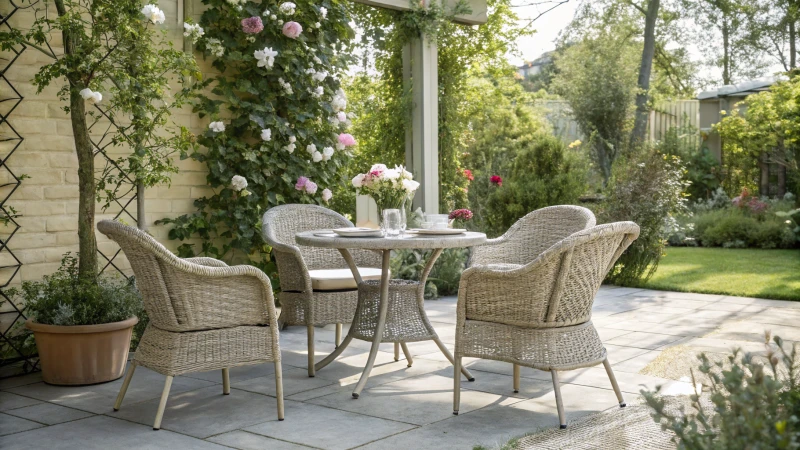
Are you thinking about using rattan cane for your outdoor furniture? I want to tell you my story!
Rattan cane, natural or synthetic, has different waterproof qualities. Synthetic rattan usually resists moisture and weather better. Natural rattan needs treatment for more durability. These differences are really important to know. They help you take care of your outdoor furniture for many years. This article reveals the truth about rattan’s waterproof nature. It gives maintenance tips. It shows you how to pick the best rattan type for your outdoor needs. Read on to keep your investment strong over time!
When I first explored rattan cane for my outdoor area, many choices overwhelmed me. Excitement mixed with uncertainty filled me. Would it survive unpredictable weather? Rattan cane offers different levels of waterproof protection. Synthetic rattan resists moisture better. Natural rattan needs treatment for stronger durability. Understanding these differences is very important. Your furniture really needs to endure rainstorms and sunny days!
Synthetic rattan is more waterproof than natural rattan.True
Synthetic rattan generally resists moisture better than natural rattan, making it suitable for outdoor use.
Natural rattan cannot be treated for waterproofing.False
Natural rattan can be treated to improve its resistance to moisture and weathering, enhancing durability.
What Are the Key Differences Between Natural and Synthetic Rattan?
Do you feel unsure about picking natural or synthetic rattan for your home? I felt that way too! Let’s explore their main differences to help you choose what suits your space best.
Natural rattan originates from palms and shows strong durability. It has a unique texture. Synthetic rattan, conversely, uses polyethylene or resin. This material resists weather changes and requires little maintenance. Each type offers distinct advantages. Needs differ, so choosing wisely matters. Knowing these facts can guide your choice.
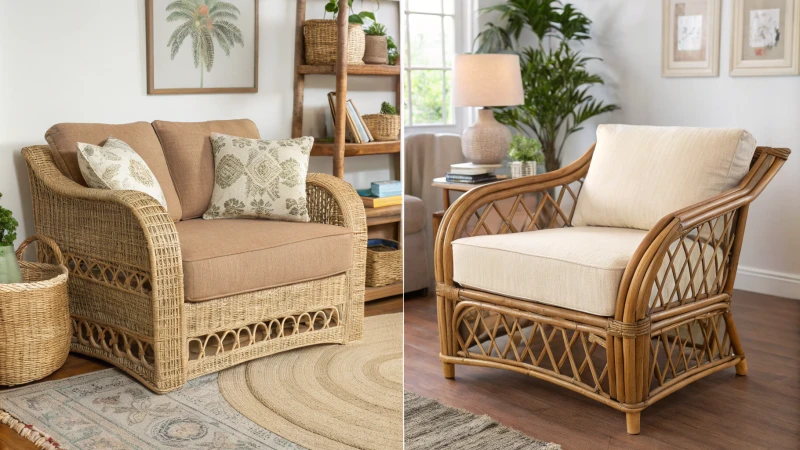
Understanding Natural Rattan
Natural rattan comes from the rattan palm, a climbing plant thriving in tropical regions. It offers an incredible mix of strength and flexibility, which makes it perfect for furniture and décor.
-
Durability: With proper care, natural rattan probably lasts a lifetime. I inherited a lovely rattan chair from my grandmother. This chair enduring through the years gives me a very heartwarming reminder of her. Still, moisture does not suit this material; water damage can be severe.
-
Aesthetic Appeal: Natural rattan’s unique textures and organic finishes really stand out. Every item tells its own story. Differences in color and grain bring depth and charm to my home décor.
-
Maintenance: Caring for natural rattan requires some attention. Regular dusting and occasional oiling help it shine. Sometimes, it felt like a small chore. However, I came to love this routine as it deepened my connection to the materials around me.
Understanding natural rattan really helps those who cherish natural beauty in making design choices.
For those interested in the beauty of natural materials, understanding the properties of natural rattan1 can enhance your design choices.
Exploring Synthetic Rattan
I discovered synthetic rattan at a friend’s summer barbecue. It handled sun and spilled drinks impressively! Often made from polyethylene or resin, it copies the look of natural rattan but offers various benefits.
-
Durability: Synthetic rattan withstands UV rays and water like a pro. For outdoor furniture, it’s a very good choice. I no longer worry about leaving chairs outside during sudden rain!
-
Aesthetic Flexibility: Synthetic rattan may look like natural rattan, but it also provides many color and finish options. I enjoy experimenting with different styles without feeling limited.
-
Maintenance: Low maintenance is a real joy! A quick wipe with a damp cloth keeps synthetic rattan fresh. This is especially helpful for busy families like mine.
If you’re considering outdoor furniture options, investigating synthetic rattan2 could be beneficial for your needs.
Comparison Table of Natural vs. Synthetic Rattan
| Feature | Natural Rattan | Synthetic Rattan |
|---|---|---|
| Durability | High (with proper care) | Very High (UV resistant) |
| Aesthetic Appeal | Unique, organic look | Mimics natural look, versatile |
| Maintenance | Requires regular care | Low maintenance |
| Cost | Often more expensive | Generally more affordable |
| Environmental Impact | Biodegradable, eco-friendly | Varies by production methods |
This table shows key differences that assist in deciding which material matches your vision and needs.
Considerations When Choosing Rattan
- Usage Context: Consider where you’ll place the furniture – inside or outside – to decide the suitable type of rattan.
- Design Consistency: Think about how each option fits with your décor style. Natural rattan may suit traditional looks, while synthetic caters to modern designs.
- Budget: Compare costs, lifespan and maintenance needs of both materials to find the best value.
For more detailed insights on sourcing, check out our complete guide on choosing rattan materials3. With all this information, I hope you feel confident in selecting the best choice for your space!
Natural rattan is derived from the rattan palm plant.True
Natural rattan comes from a climbing palm found in tropical regions, making it unique and organic.
Synthetic rattan is always more expensive than natural rattan.False
Generally, synthetic rattan is more affordable due to its manufacturing process and materials used.
How Can You Protect Rattan Furniture from Moisture Damage?
If you have ever bought lovely rattan furniture, you understand how important it is to maintain its beauty. Rattan furnishings require care. Here are some simple tips to protect your rattan pieces from moisture damage.
Coatings shield rattan furniture from moisture damage. Covering items during bad weather helps protect them. Good airflow reduces moisture risks. Frequent cleaning and conditioning keep furniture in good condition. Regular upkeep is really important.
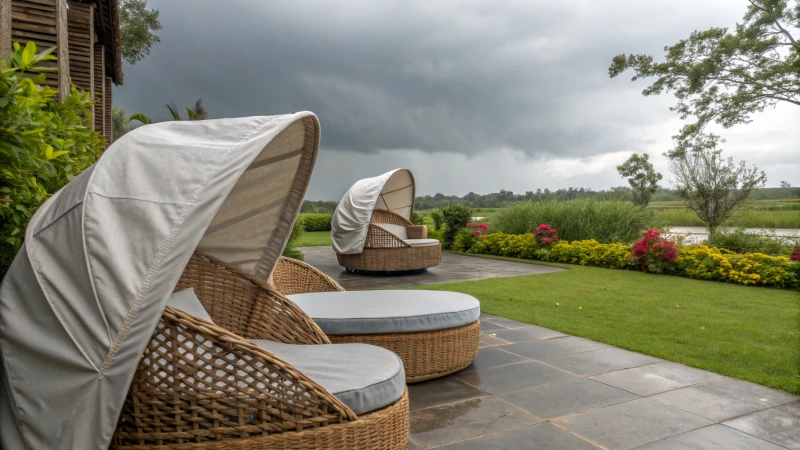
Understanding the Impact of Moisture on Rattan Furniture
Rattan is a unique material – it’s durable, looks good and comes from nature. Yet, water is a common problem. When moisture goes into rattan, it causes ugly bending, cracking or even mold. One day, I found mold on my favorite chair. This discovery shocked me. High humidity makes rattan fibers swell, which changes their shape and weakens them.
This understanding motivated me to act. I focused on regular maintenance and learned how water interacts with rattan. This knowledge kept my furniture in great condition.
Essential Protective Measures
- Use of Protective Coatings
I applied a sealant to my furniture and it felt like a warm hug against water! Choose products made for rattan and wicker furniture.- Oil-Based Sealants: These go deep into the fibers, nourishing and shielding them.
- Water-Based Sealants: Super easy to use, but reapplication might be needed more often.
| Sealant Type | Pros | Cons |
|---|---|---|
| Oil-Based | Long-lasting, deep penetration | Longer drying time |
| Water-Based | Quick-drying | Requires more frequent application |
-
Cover Your Furniture
During storms, I cover my rattan with breathable covers. This small step keeps water out and allows air to circulate. -
Proper Ventilation
I learned that placing my rattan in areas with good airflow is very helpful. It lessens humidity and reduces water absorption. I use a dehumidifier in tight spaces during humid months. It really helps! Keeping furniture away from walls improves air circulation.
Maintenance Tips for Longevity
- Regular Cleaning: Dust rattan often with a soft cloth or vacuum brush. Dirt can trap water and cause damage.
- Immediate Drying: If my rattan gets wet, I dry it with a soft towel right away. This simple action prevents problems.
- Conditioning: Every few months, I apply a conditioner to my rattan. This keeps it flexible and less prone to water damage.
Through these steps, I’ve extended my rattan’s life and kept its beauty and usefulness. Sitting on my well-maintained furniture fills me with gratitude for the care I’ve given it.
Additional Resources
To learn more about protecting against moisture, explore care tips for outdoor rattan4 and best maintenance practices. These resources have greatly aided my efforts to keep my furniture looking nice!
Rattan furniture absorbs moisture, leading to damage.True
Moisture can cause warping, cracking, and mold in rattan furniture, threatening its durability.
Oil-based sealants are better for rattan than water-based ones.True
Oil-based sealants penetrate deeper and last longer, providing more effective moisture protection for rattan furniture.
What Maintenance Practices Can I Use to Extend the Life of My Rattan Cane Outdoors?
Rattan cane furniture holds a special place in my heart. It adds charm to any outdoor space. However, like any cherished item, it needs care to stay beautiful. How can I help it last longer?
I think regular cleaning keeps outdoor rattan cane furniture in good shape. Protective coatings add extra defense. Proper storage during off-seasons preserves the furniture’s condition. Direct sunlight exposure harms the material, so limiting it is important. Addressing any damage quickly really helps maintain its look. Regular maintenance is necessary.
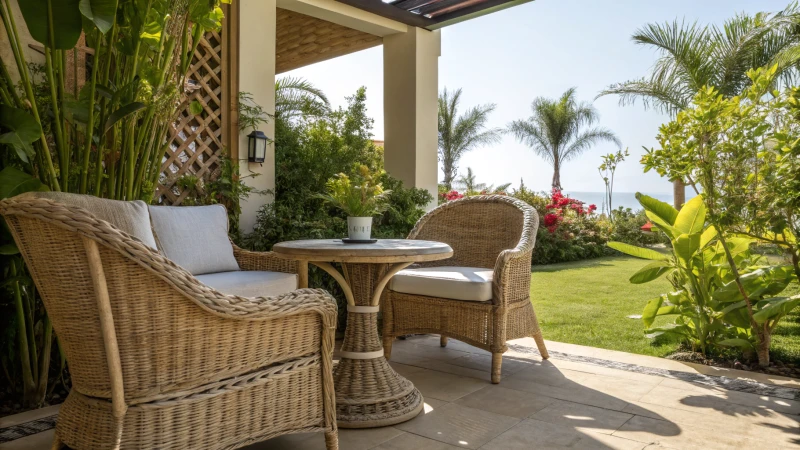
Regular Cleaning and Maintenance
To extend the life of rattan cane furniture outdoors, regular cleaning is essential. I discovered that a few upkeep actions truly help. Dirt, dust, and debris can accumulate, leading to degradation over time. A simple method involves using a soft brush or a vacuum cleaner with a brush attachment to remove loose particles. For deeper cleaning, a mixture of mild soap and warm water can be applied using a damp cloth.
It’s crucial to avoid harsh chemicals that can damage the rattan fibers. Rinse thoroughly with clean water and allow it to dry completely in a shaded area to prevent sun damage.
Protective Coatings
Protective coatings add an extra shield and can significantly enhance the durability of rattan furniture. Consider using a UV-resistant sealant that protects against sun damage and prevents fading. Reapplying these coatings every few months, especially before the summer season, can shield your furniture from harsh elements.
Check out protective options5 for more information on various coatings available.
Storage During Off-Season
Proper storage during off-seasons really matters. When not in use, it’s advisable to store rattan cane furniture indoors or in a sheltered area. Covering them with breathable furniture covers helps protect against moisture and pests. During wet seasons, ensure proper ventilation to prevent mold growth.
This practice is crucial for preserving the material’s integrity.
Avoiding Direct Sunlight
Avoiding direct sunlight is essential as direct exposure can lead to color fading and brittleness in rattan cane furniture. Positioning your furniture in shaded areas or using umbrellas can help mitigate this issue. If relocating is not possible, consider using protective covers that can block UV rays during peak sun hours.
Addressing Damage Promptly
Any damage needs immediate attention; small damages like fraying or loose strands should be addressed immediately to prevent further deterioration. Repair kits are available that include adhesive and weaving materials specifically designed for rattan. For extensive damage, consulting with professionals may be necessary to restore the furniture effectively.
Conclusion
These are my key methods! Incorporating these maintenance practices will help you enjoy your rattan cane furniture for many seasons to come. Let’s explore these steps so you can enjoy your rattan furniture like I do! For more tips on outdoor maintenance, refer to outdoor care techniques6.
Regular cleaning prevents degradation of rattan cane furniture.True
Consistent cleaning removes dirt and debris, protecting the rattan fibers from damage and extending the furniture's lifespan.
Storing rattan cane furniture indoors is unnecessary year-round.False
Storing rattan cane furniture indoors or sheltered is essential during off-seasons to prevent moisture damage and preserve integrity.
What Treatments Can Make Rattan Furniture Weather-Resistant?
Have you ever looked at your lovely rattan furniture and wondered how to keep it bright and fresh? I have thought about that too! Let’s explore ways to care for your rattan items. These treatments help your furniture last longer. Keep rattan pieces prepared for outdoor fun.
Absolutely! Several effective treatments protect rattan from weather. Waterproof coatings guard against water. UV protectant sprays shield from sunlight. Oil treatments also provide protection. These options extend your rattan furniture’s life. Rattan furniture will probably last many more seasons this way.
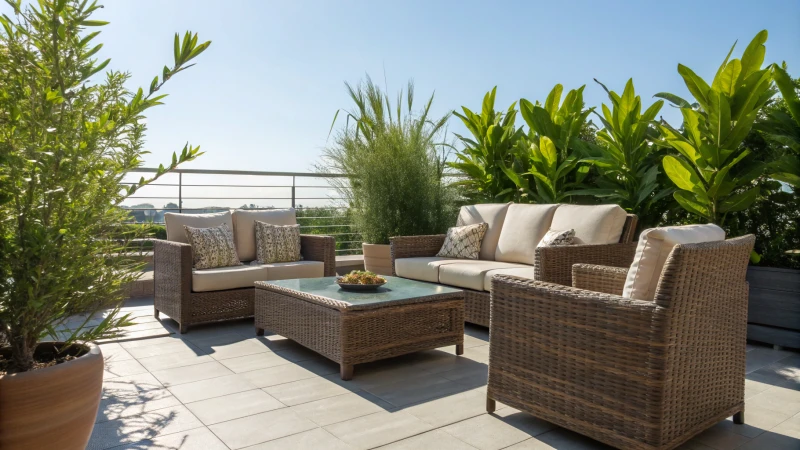
Understanding Rattan’s Natural Qualities
Rattan is a beautiful material. It’s strong and flexible, so many people use it for furniture. However, rattan has some weaknesses. It can suffer damage from rain, sun, and heat. I discovered the hard way that shielding my rattan is vital. Very important!
Common Treatments for Weather Protection
I found several treatments to help guard rattan furniture against weather. Many options really impressed me. Each treatment offers its own benefits, making it crucial to choose the right one based on your rattan’s needs.
| Treatment Type | Description | Benefits |
|---|---|---|
| Waterproof Spray | The spray forms a barrier that keeps moisture out. | It’s like giving rattan a raincoat. Very effective! |
| Sealants | Sealants stop water from getting into rattan fibers. | This works well for outdoor furniture. Very useful if exposed to rain. |
| Dipping Treatments | Some companies dip rattan in a waterproof solution. | This gives complete protection; a smart choice for maximum safety! |
For detailed steps on how to apply these methods, you might explore application techniques7.
Protective Coatings: A Closer Look
Coatings helped my rattan last longer. Here’s what I discovered:
- Types of Coatings: Different coatings affect look and function, such as varnish or polyurethane. I tried a few and each made my furniture look unique.
- How to Apply: Prepping the surface is important for a smooth finish; clean and dry rattan before any coating. This step really matters a lot!
For more information on specific products, you can check out best products for rattan8.
Thinking About the Environment
When treating rattan, I also thought about the environment:
- Eco-Friendly Sealants: Sealants without harmful chemicals became my favorites.
- Sustainable Sourcing: I check if treatments come from eco-friendly practices; it’s important for me to align my actions with my beliefs.
For more sustainable options, you may visit sustainable practices9.
Waterproof coatings enhance rattan's moisture resistance.True
Applying waterproof coatings protects rattan from moisture absorption, significantly improving its durability and longevity in outdoor conditions.
UV protectant sprays prevent fading of rattan furniture.True
Using UV protectant sprays shields rattan from harmful rays, preventing color degradation and extending its aesthetic appeal over time.
Conclusion
Discover the waterproof qualities of natural vs. synthetic rattan cane, along with essential maintenance tips to enhance durability for outdoor furniture.
-
Discover the advantages of each type of rattan to make an informed decision on your next furniture purchase. ↩
-
Explore expert opinions and detailed comparisons to help choose the right material for your needs. ↩
-
Gain insights into maintenance requirements and design applications of both types of rattan. ↩
-
Discover expert tips on protecting your rattan furniture from moisture damage. Click to enhance your knowledge and ensure your pieces last longer! ↩
-
Explore these resources to discover expert tips on maintaining outdoor rattan cane furniture effectively. ↩
-
Learn about different protective coatings that can enhance the durability of your rattan cane items. ↩
-
Discover effective treatments to enhance your rattan’s durability against outdoor elements by clicking this link. ↩
-
Learn about eco-friendly protective coatings for rattan by following this link for sustainable options. ↩
-
Find sustainable practices in treating rattan furniture by checking this link. ↩

